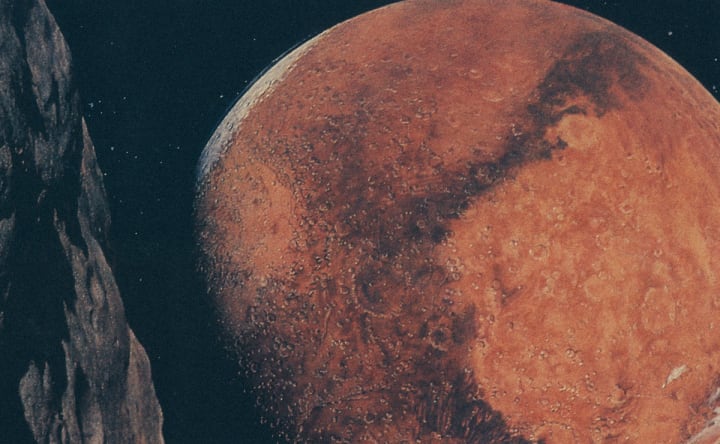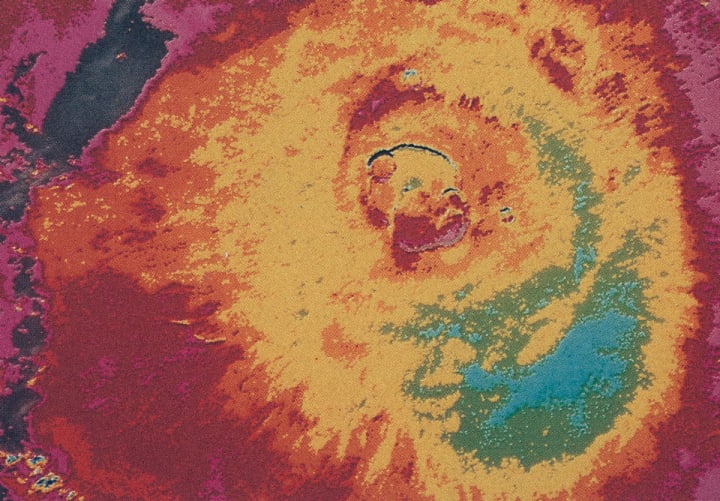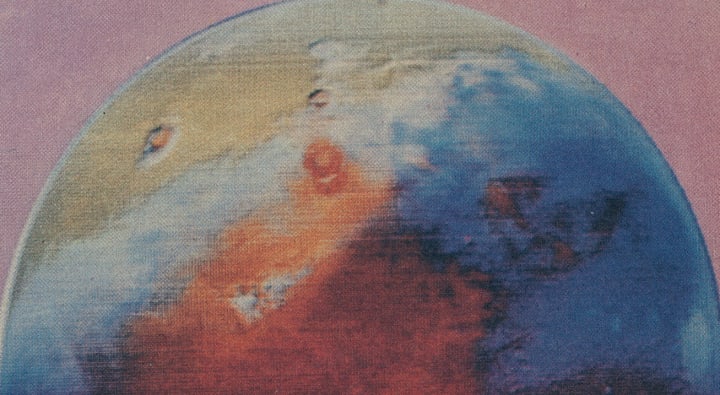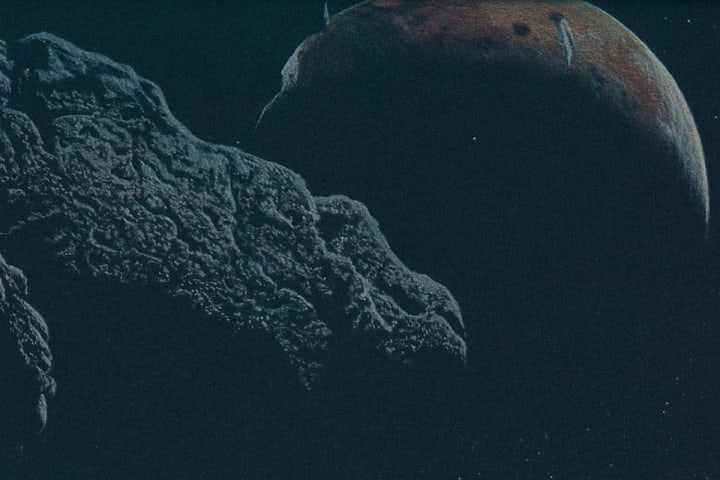Is Life on Mars Possible?
Colonization of Mars would be difficult given the red planet's hazardous conditions.
Is it any coincidence that The Martian came to the big screen the same week that NASA discovered water on Mars? Many people believe that this it's too suspicious to be a coincidence. The Martian, released on October 2, 2015, depicts Matt Damon as astronaut ark Watney, who is suspected to be dead after a dangerous storm hits Mars. After being left behind by his crew mates, it is discovered that he had in fact, survived the storm. Left to survive the desolate environment and somehow send a message to Earth that he has survived, Watney faces the challenge of staying alive on an uninhabitable planet. The discovery of water on Mars seems like it could have been created as a publicity stunt to promote the movie. However, the discovery has caused scientists to relish the possibilities of what life on that planet would be like, and to ask "is life on Mars possible?"

Winter Mars by Don Davis
Exploration of Mars
Mars has been an interest to the science and space arenas for many decades. Astronomers, scientists, and the average Joe alike have often wondered what it would be like to live on another planet. In 1965, NASA's Mariner 4 spacecraft completed the first Martian flyby. Six years later, the Soviet Union's Mars 3 lander was the first craft to land successfully on Mars. Since then, there have been various successful missions to our neighbor planet, which include the expeditions of four Mars rovers: Sojourner, Spirit, Opportunity, and Curiosity, as well as NASA's Mars Odyssey, the spacecraft that handled producing a map of the whole planet.
In 2013, a Dutch company announced a Mars One robotic trial mission that will start in 2018 and will be followed up by a manned mission in 2025. The man-piloted operation requires four lucky Earthlings to colonize the red planet, with no prospect of returning to Earth. Although the chances of successfully returning were so slim, there were over 200,000 applicants that were willing to participate. Although the plan has since been canceled, it just goes to show the enthusiasm and excitement that comes with the idea of inhabiting Mars.

Olympus Mons Volcano via Nasa
Water on Mars?
If we were able to see Mars over a few billion years ago, we'd see a planet with lakes, rivers, and possibly even an ocean. The water that was discovered in October 2015 was small in comparison to the bodies of water that once inhabited the planet. The strongest evidence yet that liquid water flows sporadically on the Martian surface is from a spectroscopic analysis, which discovered hydrated perchlorate salts in flow streaks on the walls of craters. The source of the water is still under investigation. Researchers haven't determined if the water is originating in subsurface reservoirs or if perchlorate salts are actually pulling water vapor from the air. The discovery of water doesn't prove there is currently life on Mars or that humans could survive there, but it does give us hope that the harsh landscape can house some source for microorganisms to cling to.
Naturally, Mars would be our next choice planet to inhabit after Earth. In the event that climate change or another condition makes Earth uninhabitable, we could seek resources from our neighbor. We could obtain water, precious metals, or develop additional croplands. The planet is also covered with regolith, a material that can be used to make concrete. There has even been some research regarding the seasons on Mars. Like Earth, Mars tilts on an axis. In the northern hemisphere of Mars, there would be about seven months of spring, six months of summer, about five months of fall, and four months of winter. The year on Mars is about 1.88 Earth years, which results in longer seasons.

Color-enhanced Photo of Mars via NASA
Hostile Environment
On the other hand, Mars is a hostile environment that would prove difficult for humans to survive on. The average temperature on the red planet is -80 degrees Fahrenheit and temperatures can reach as low as -195 degrees Fahrenheit. Powerful dust storms are a result of the constantly fluctuating temperatures and can cover the whole planet in just several days. The air on Mars is as thin as the atmosphere 55,000 feet above Earth and is made up almost entirely of carbon dioxide. Without some form of assistance, the lack of viable oxygen would make the space uninhabitable by humans. There's also the fact that Mars has no ozone layer and is constantly blasted with UV radiation. Mars doesn't have a global magnetic field or thick atmosphere to protect its surface from the harsh exposure. The salts that are found on Mars are highly corrosive compounds and are toxic to most of the organisms on Earth. Gravity on Mars is only 38 percent of Earth's, so humans would need to relearn movements and adjust.

Martian Moon Deimos by David Egge
Apocalyptic Comets
Another concern that would need to be addressed pre-colonization is the fact that Mars is regularly host to a plethora of apocalyptic comets. The comet "Sliding Spring" rapidly approached Mars at 126,000 mph and barely missed the red giant, but the close encounter gave NASA the opportunity to capture stunning photographs. Sliding Spring passed Mars at a meager 140,000 kilometers away, about one-third the distance between earth and its moon. Sliding Spring is believed to be the first deep space comet to visit the inner solar system. It departed the Oort Cloud beyond Neptune's orbit more than a million years ago.
"It's excitingly fortunate that this comet came so close to Mars to give us a chance to study it with the instruments we're using to study Mars," said Opportunity science team member Mark Lemmon. "The views from Mars rovers, in particular, give us a human perspective, because they are about as sensitive to light as our eyes would be." NASA worried high-velocity dust particles might damage the Mars Orbiter Odyssey, but luckily the spacecraft survived the close encounter unscathed. Two key strategies to lessen the risk were to place the orbiters on the opposite side of Mars at the time of the highest risk and to orient the orbiters so that their most vulnerable parts were not in the line of impact.
If Sliding Spring had impacted Mars it would have created an impact crater roughly 10 times the diameter of its nucleus. Based on early upper-limit size estimates, the resulting upper-limit energy of a hypothetical impact with Mars was 24 billion megatons. The aftermath of such an explosion would not likely affect the Earth directly, but surface rovers and orbiting spacecraft would have been in trouble.
The event provides NASA an unprecedented opportunity for research as Mars passes directly through the comet’s coma, the envelope of gas and dust surrounding the comet's nucleus. Findings may one day influence Mars colonization, and the design of habitats which account for the impact of passing comets. Humanity cannot blindly colonize Mars and expect to succeed like the characters in a Ray Bradbury novel.

Design for "Quest in Time and Space" by Chris Foss
Survival on Mars
This discovery of water and the controversy of inhabiting other planets has sparked an interest in researchers to create innovative ways in which we can survive on Mars, despite its unforgiving conditions. Many of these ideas include living in pressurized and heated habitats, creating spacesuits to protect us from radiation, and extracting water from underground. Humans would need to produce their own food, which can be grown in Martian soil, once the toxins are removed. There was even mention of genetic engineering to help future generations adapt successfully to the low gravity, high radiation, and low air pressure.
The colonization of Mars by a significant population of the human race may take thousands, or even millions of years. But it still doesn't halt the excitement of packing up your bags and moving to the planet next door, except that it would take about 3,888 hours or 162 days. So for now, most researchers and scientists would agree that we will stick to examining and surveying the planet from space. The discovery of water has garnered new investigative and scientific interest that will lead to more exploration of Mars.
About the Creator
Futurism Staff
A team of space cadets making the most out of their time trapped on Earth. Help.






Comments
There are no comments for this story
Be the first to respond and start the conversation.